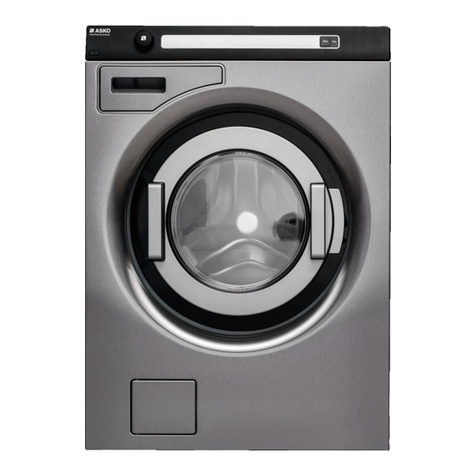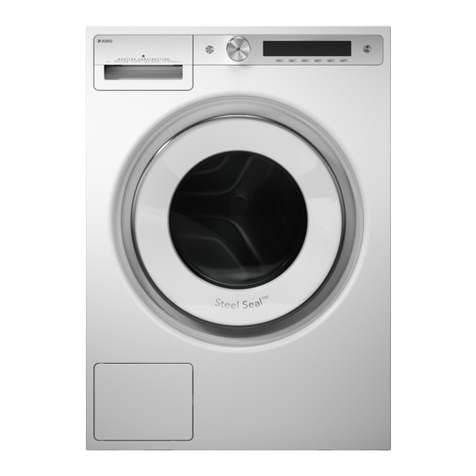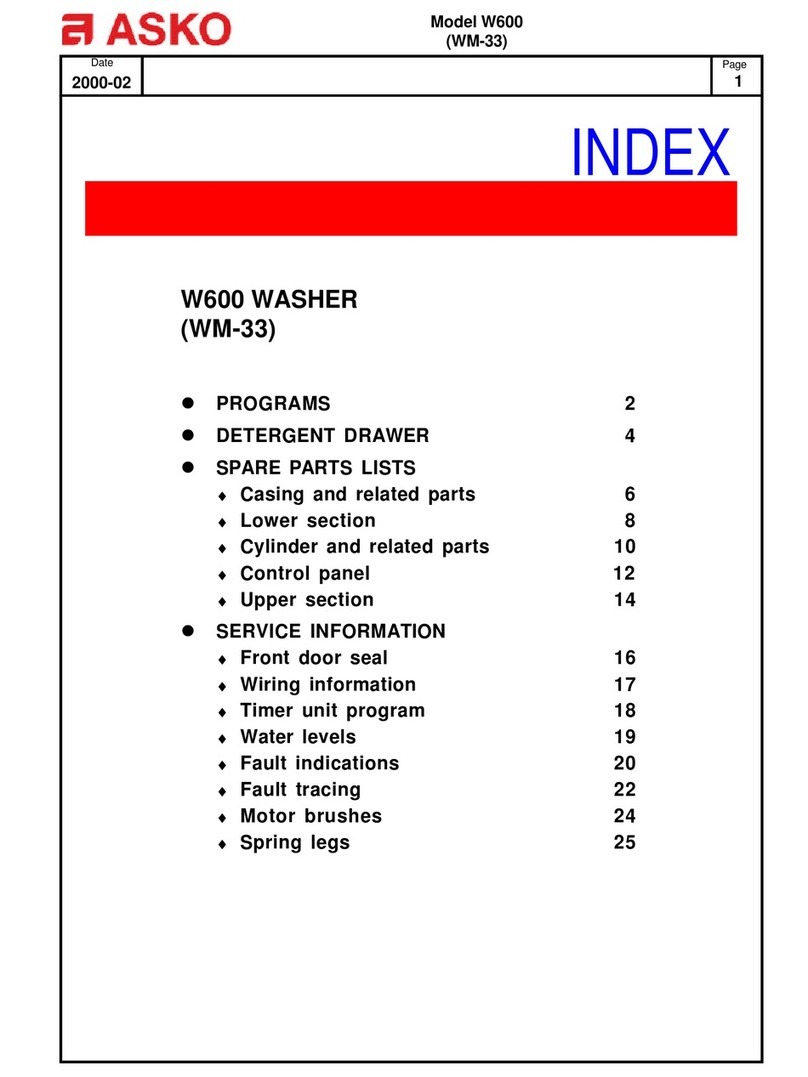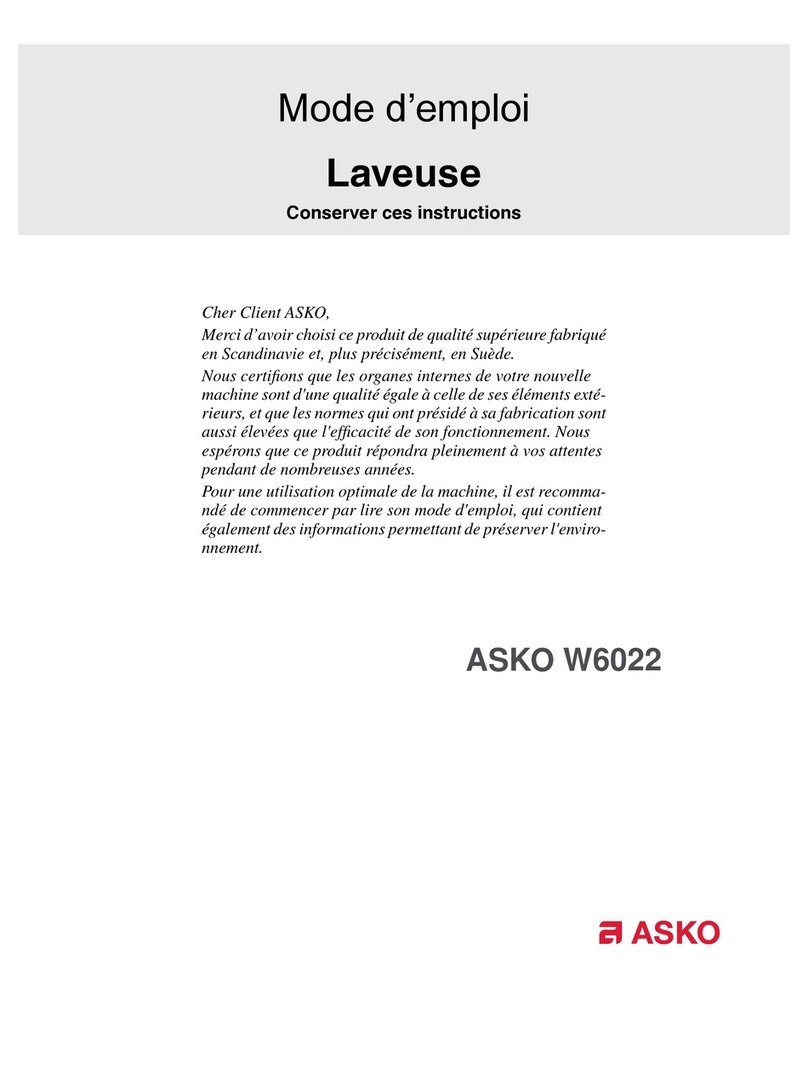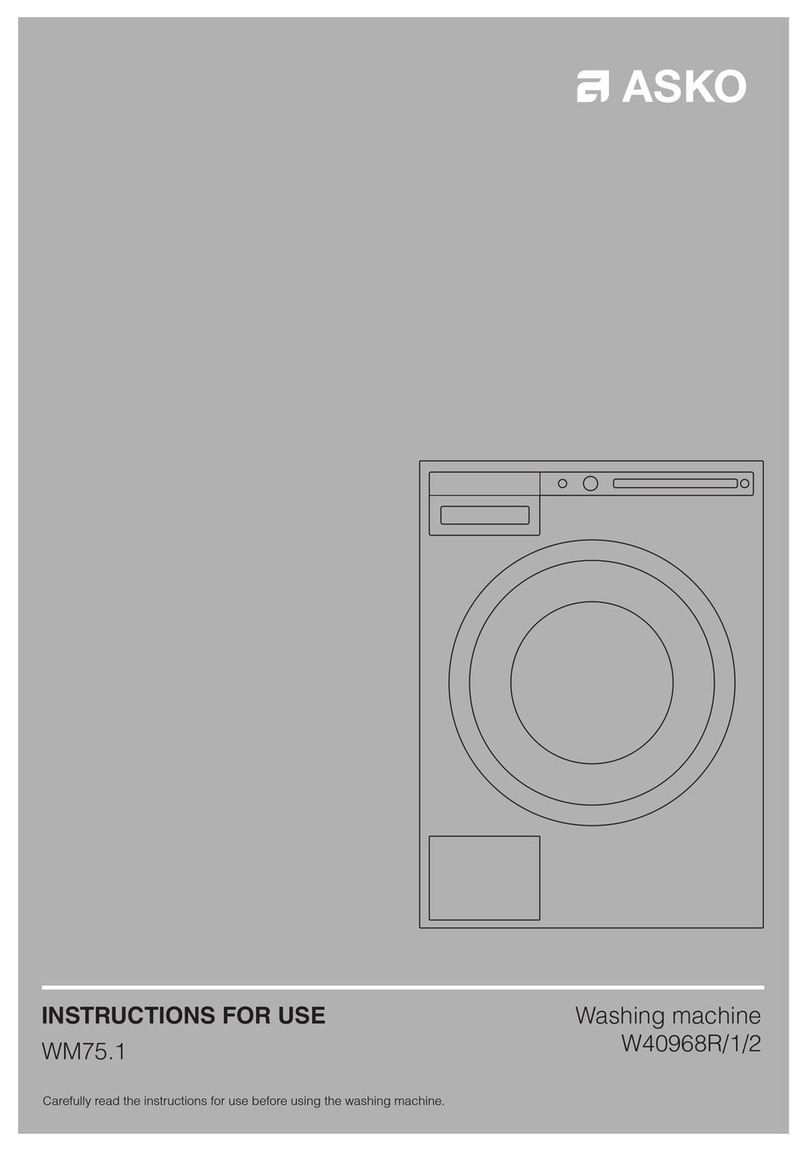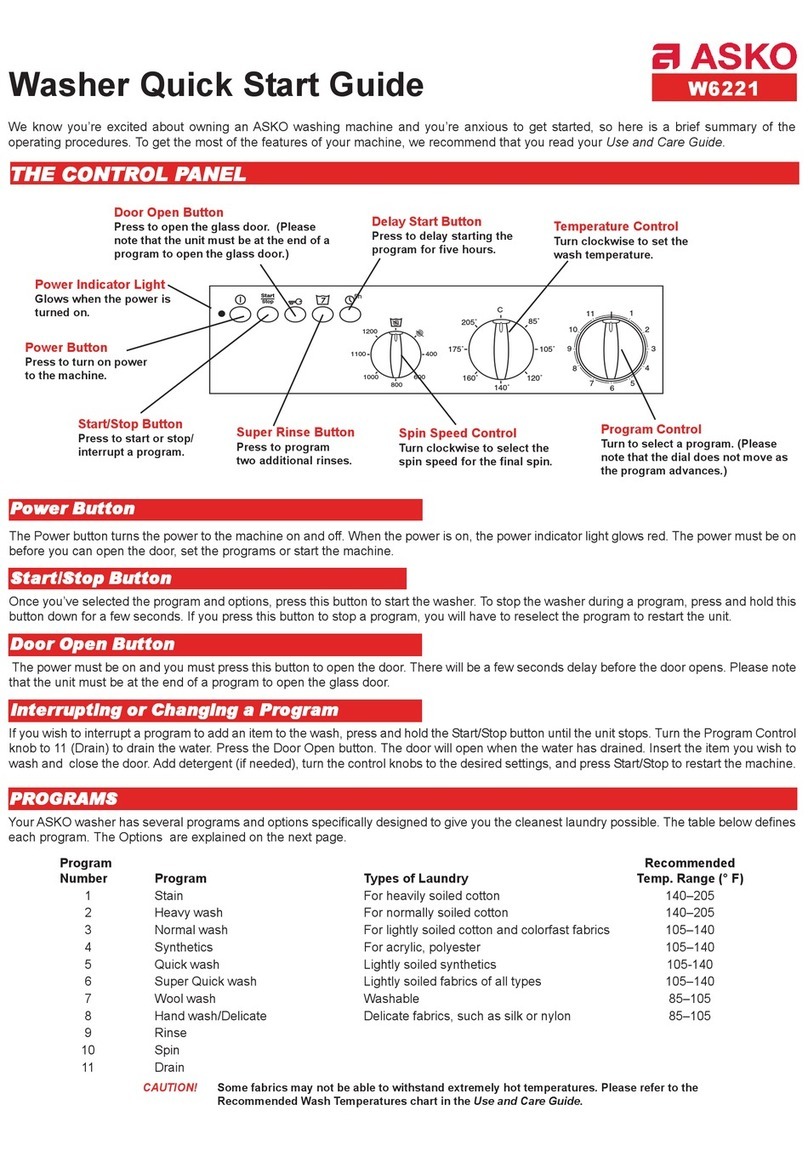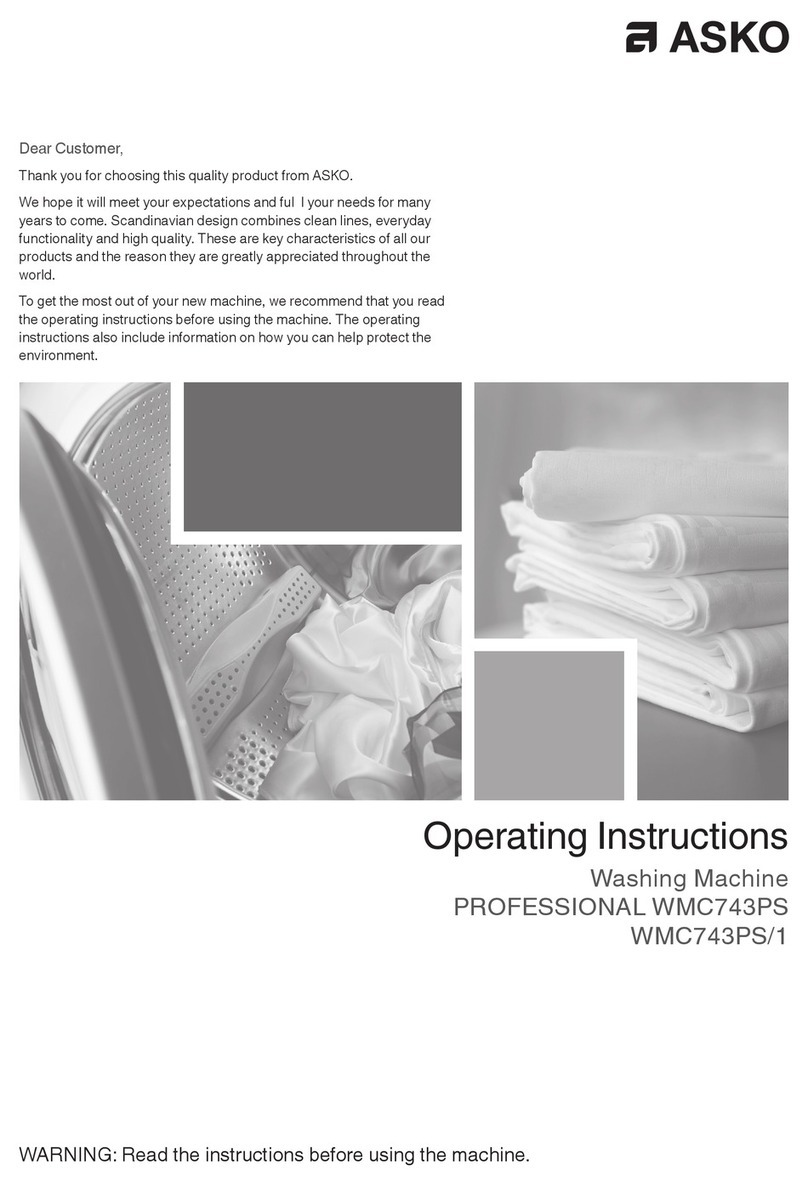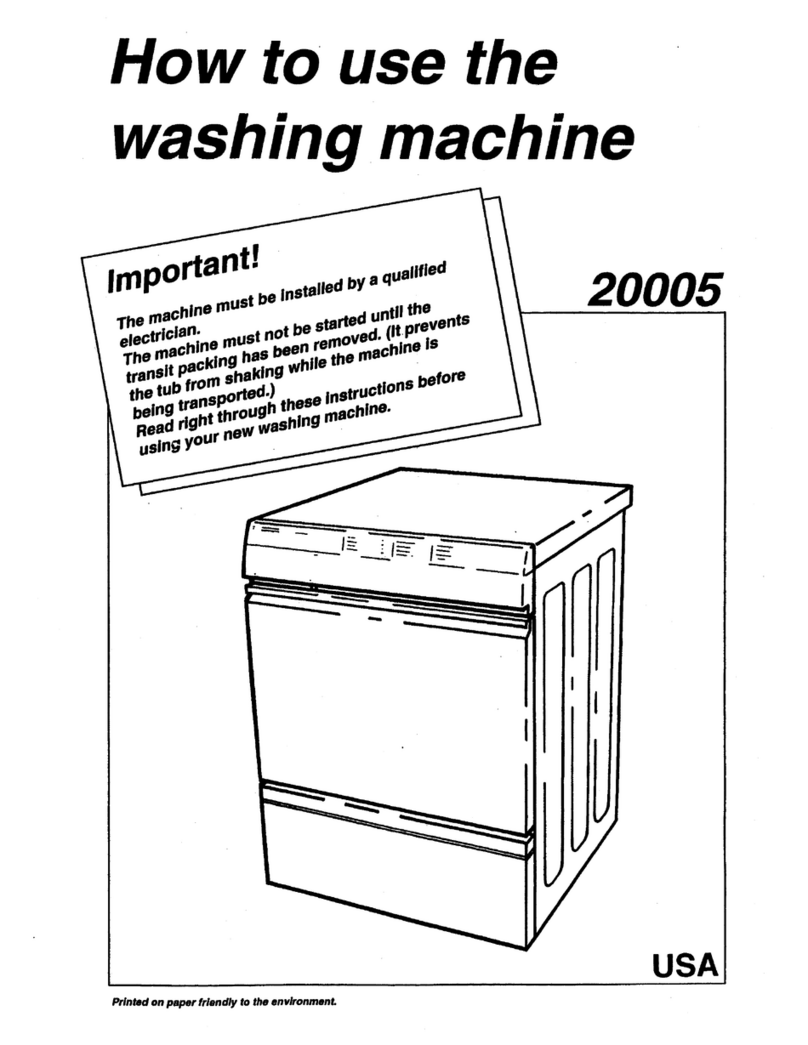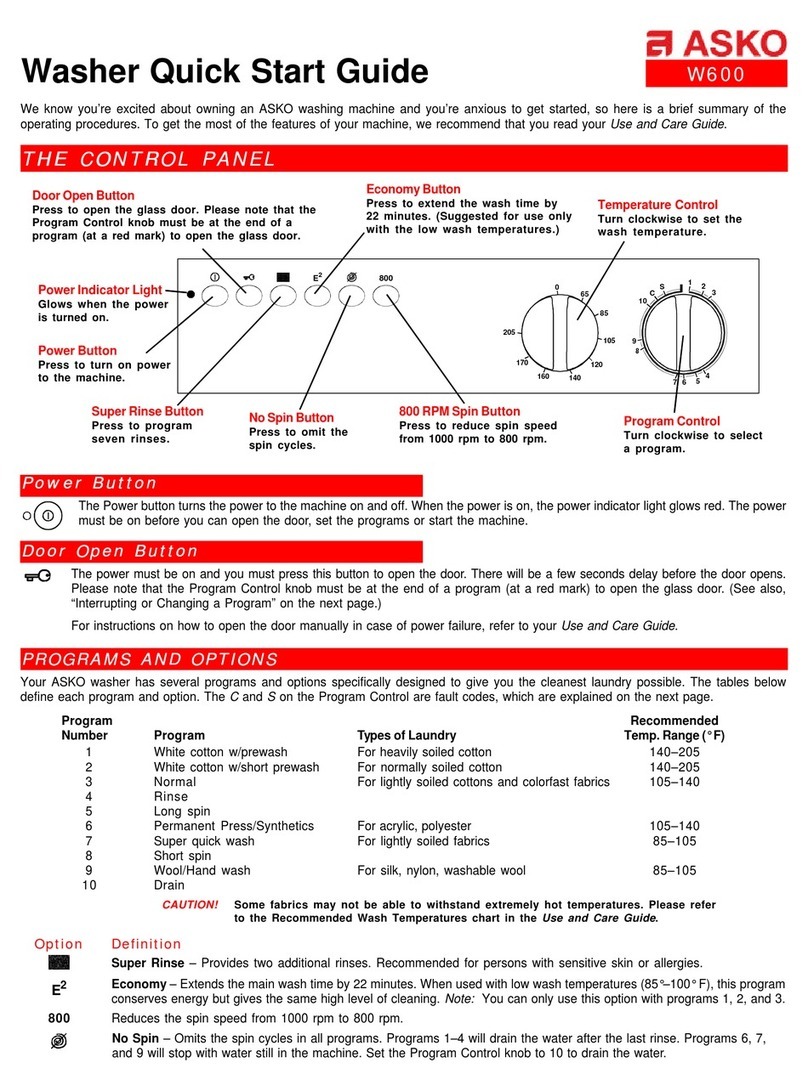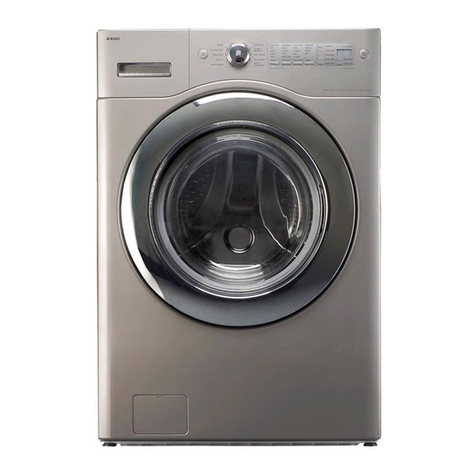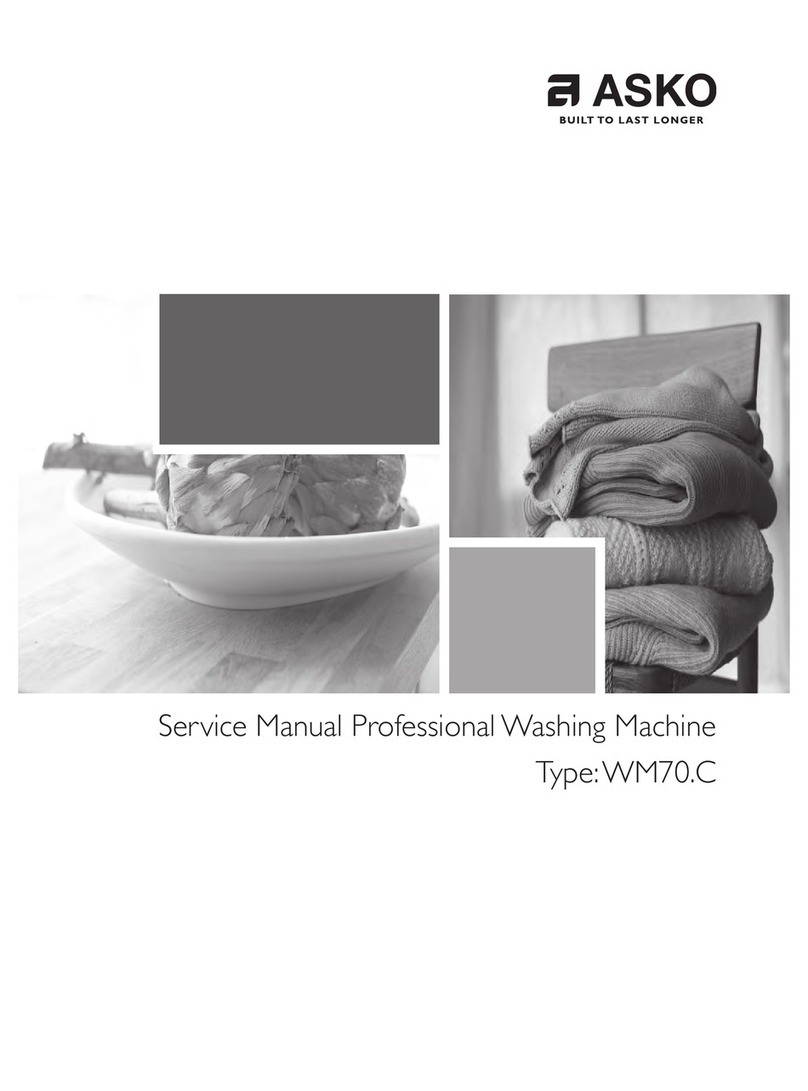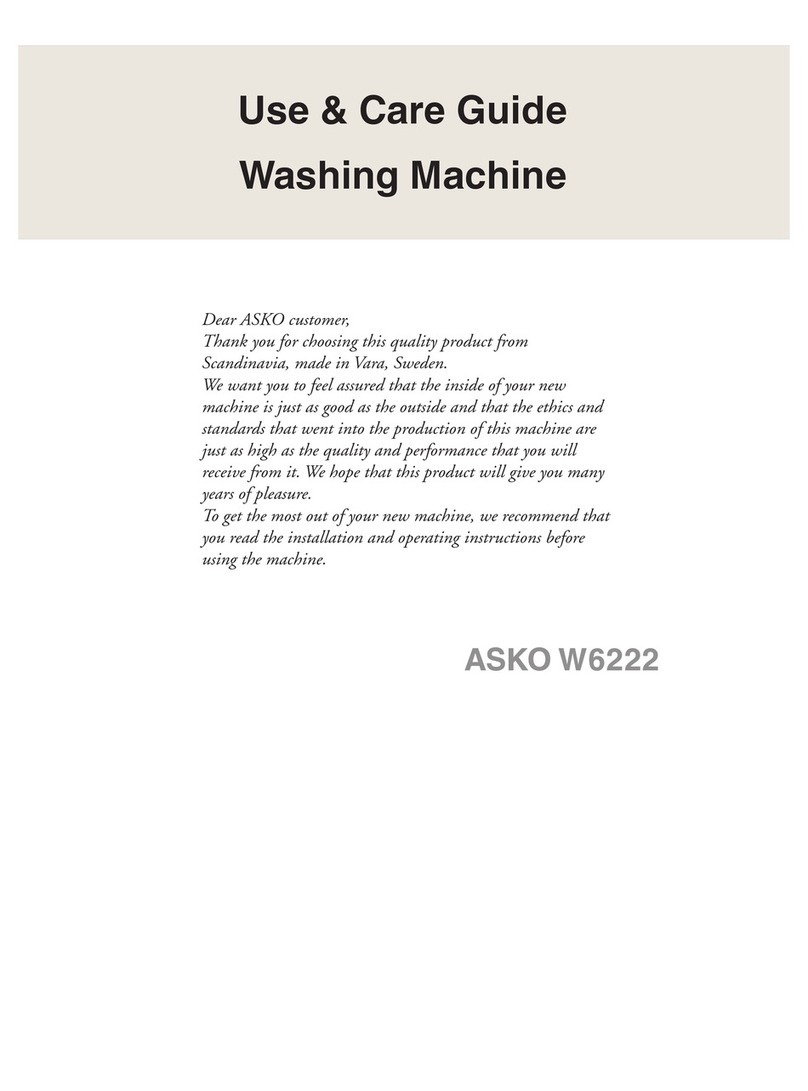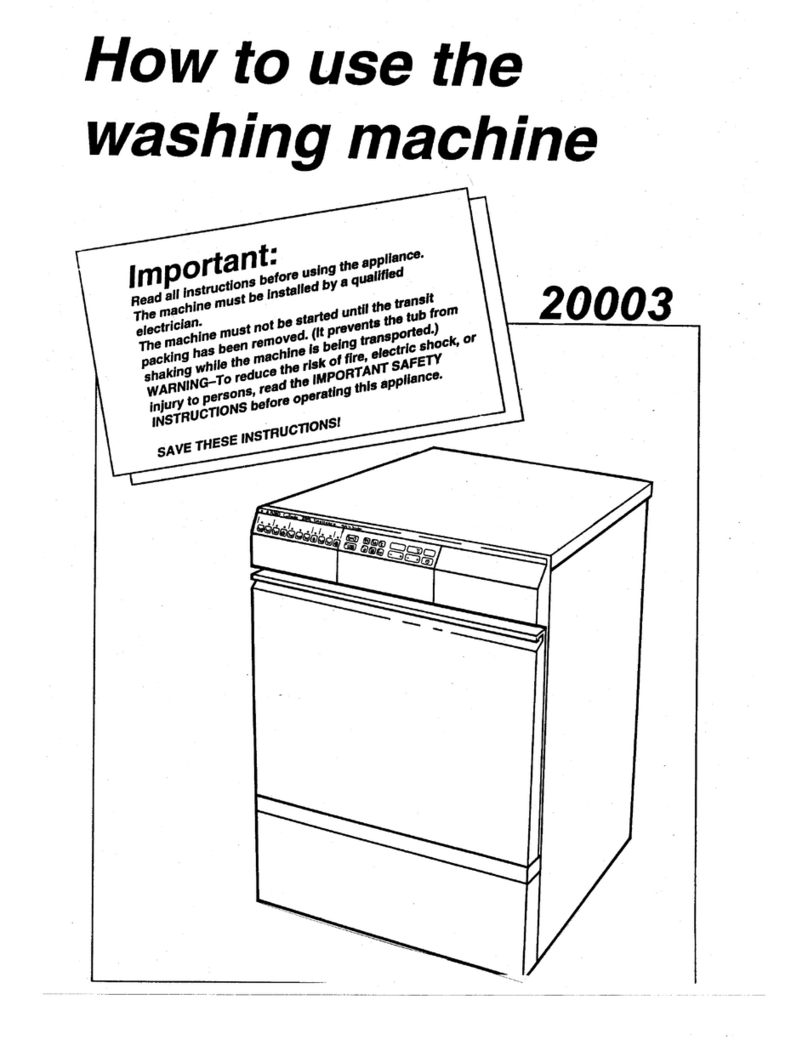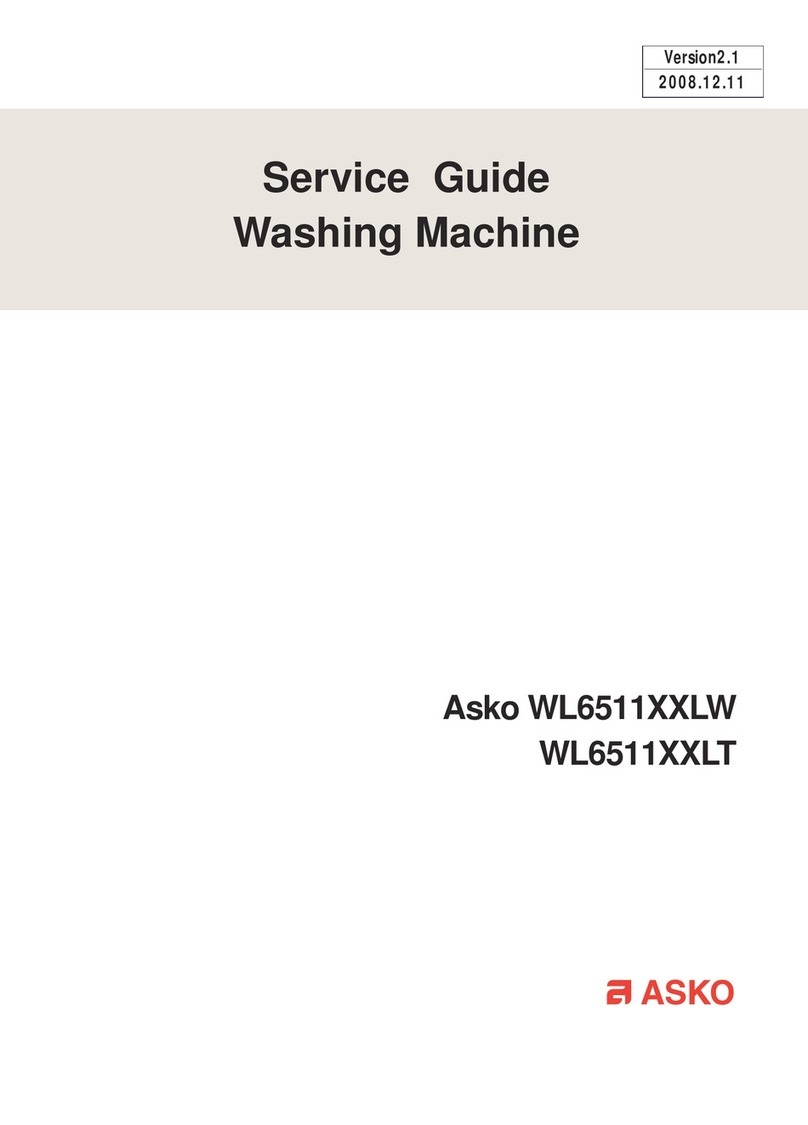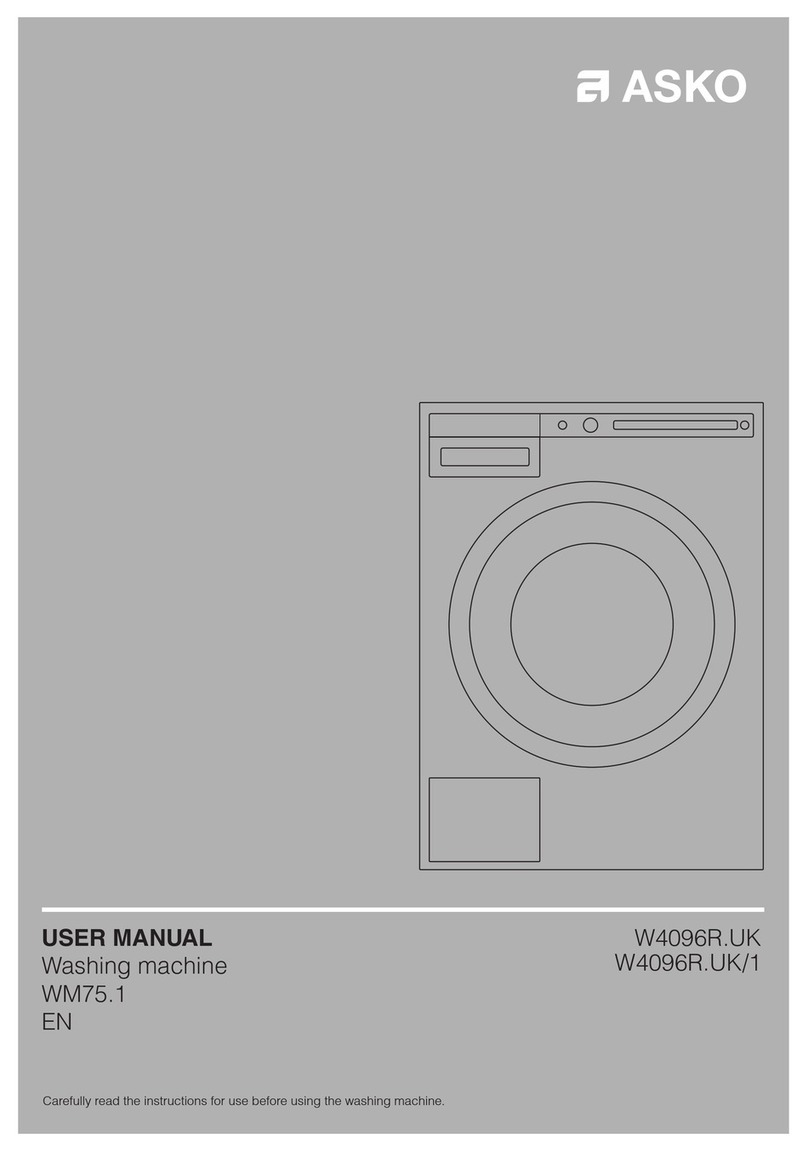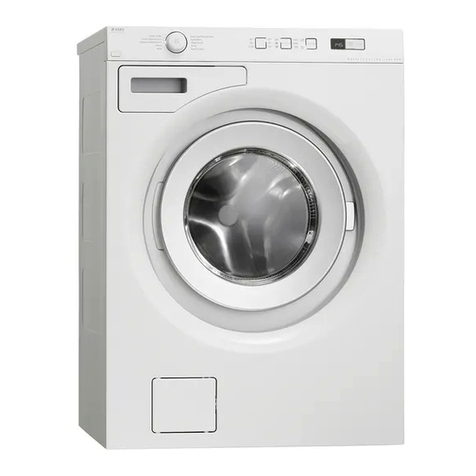4
Fill with additional detergent if required, set a
new program and close the door and the mach-
ine will start.
OVERFILL PROTECTION
If the level of water in the machine rises above
normal, the overfill protection will start to pump
out water and shut off the water supply. The
program will be interrupted if the level does
not fall within 60 seconds.
PACKING MATERIAL
Sort the packing material for recycling accor-
ding to recommendations by the local authori-
ties.
TRANSPORT/WINTER STORAGE
If the machine is to be transported or stored
during the winter, on unheated premises, emp-
ty the needle trap and the drain pump, see Chap-
ter 10, Care and cleaning.
If you have any questions, please phone your
retailer.
DISPOSAL
Contact your refuse collection service or your
local authorities for advice on how to scrap the
machine in a proper manner for recycling.
The machine is made and marked to facilita-
te recycling.
GENERAL
• Study and save this Use and Care Guide for
future reference.
• Electrical and water installation, if required,
must be carried out by authorised persons.
• The machine may only be used for washing
in accordance with this Use and Care Guide -
not for dry cleaning.
• Use only detergents intended for machine
washing.
• Remove the transport supports before using
the machine, see installation instructions.
INSTALLATION
See the accompanying installation instructions.
WASHER DOOR
The door of the washer opens electrically. Con-
sequently, the door cannot be opened normally
until the machine is connected to an electric
power supply.
To open the door manually, see the heading,
Door will not open, in Chapter 11, Trouble
shooting.
The machine cannot be started with the door
open.
To open the door during operation, see be-
low, Interrupting a program.
INTERRUPTING A PROGRAM
To interrupt a washing program, turn the pro-
gram knob forward to position 11, Drain. Any
water in the machine will be pumped out. Press
the button to open the door. To restart:
2 SAFETY INSTRUCTIONS

